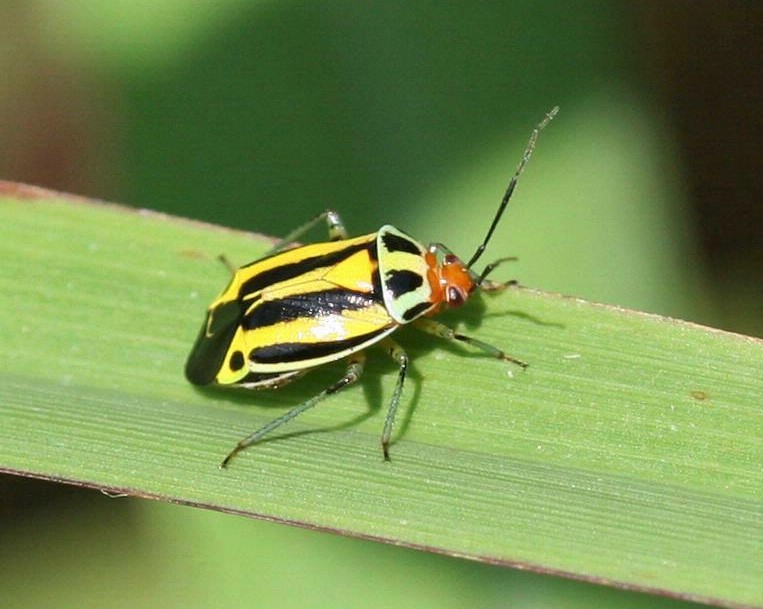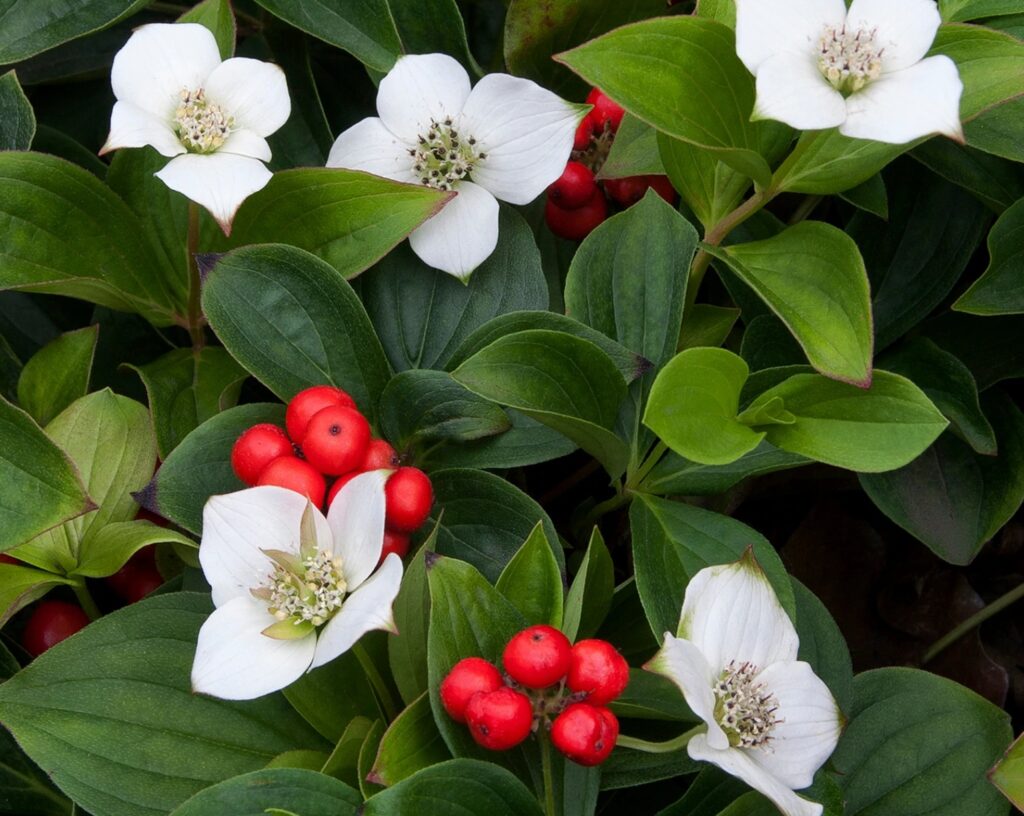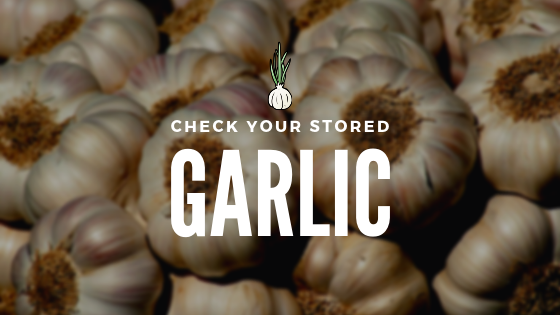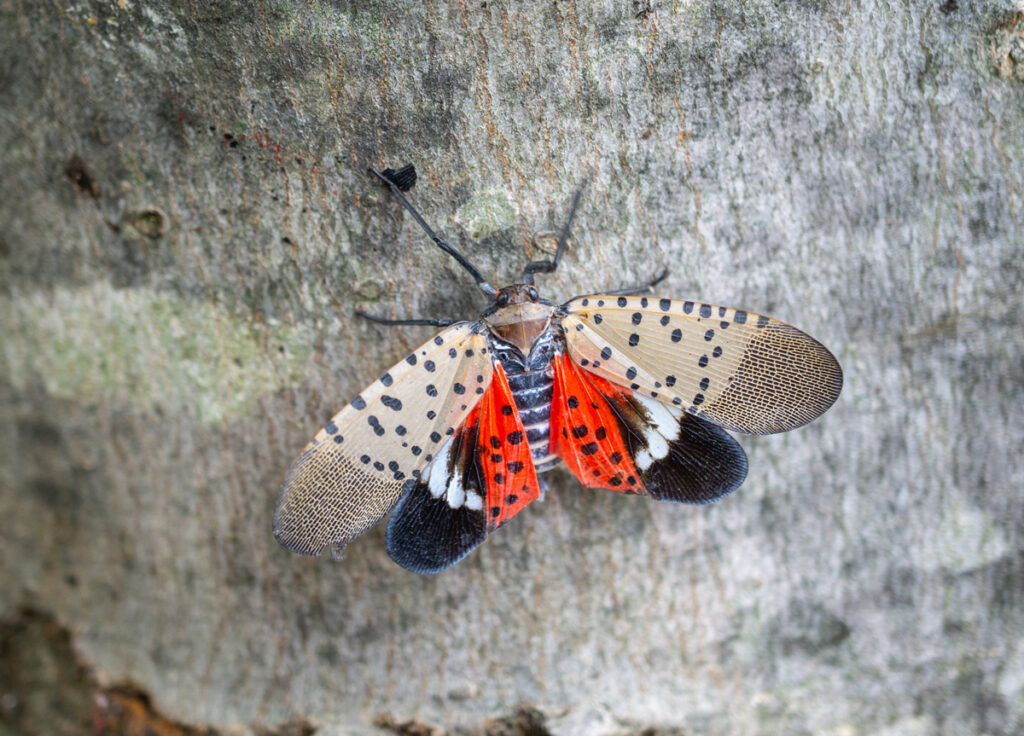
More bugs show up in our gardens as we welcome the summer weather. One of the newer pests in my garden is the four-lined plant bug. We appreciate the visits of bees, butterflies, and flies as they are essential for the pollination of many flowering and fruiting plants. Even some wasps, ‘keepers of the garden’ play an important role as they feed on certain caterpillars and other predators. But, we would prefer if some bugs, including the four-lined plant bug, don’t munch too many of our edible and ornamental plants, especially if they eat more than their fair share.
Importance of regular ‘Walk-Abouts’
It is always a good idea to walk through our gardens periodically to inspect our plants. As I deadhead spent blooms, I check the leaves – both top and underside – for insect damage, eggs etc. This helps me detect insect damage or disease as early as possible, allowing me to deal with things before they become a major problem.
The other day, while carefully going through my gardens, I noticed some leaf damage on a couple of my young zinnias. With closer inspection, I found Four-lined Plant Bugs Poecilocapsus lineatu. TIP – leaf damage appears as tiny, round, sunken marks.

Leaf damage and Nymph. Photo credit Matthew Borden, Bartlett Tree Experts, Bugwood.org
Identify Four-lined plant bugs
The adults are greenish-yellow with four black stripes (hence the name) running down their back, wing area. This common garden pest is native throughout eastern and midwestern USA and Canada. Based on my garden and reports from fellow gardeners, 2021 seems to be a very good year for this bug!

Adult Four-lined Plant Bug. Photo credit Johnny N. Dell, Bugwood.org
Four-lined plant bugs hatch in mid to late spring. The bright red nymphs feed on the upper side of leaves for about four weeks then molt into green-yellow adults. The adults keep feeding until early July then mate. The female bugs then lay their small banana-shaped eggs on the plant stems.
Thankfully only one generation is produced each year, however, both the nymphs and adults gnaw on leaves with their pierce-sucking mouthparts. They probe the leaves, removing the chlorophyll which produces those dark round sunken spots. The damaged tissue then drops out a few weeks later, leaving small holes. Severe feeding can brown the leaves and may cause wilting on new young tender leaves.
What plants are impacted by Four-lined Plant Bugs?
Four-lined plant bugs can feed on many different plants. Sadly they aren’t too choosy and reports suggest as many as 250 species can be affected. I find them commonly feeding on perennials such as Chrysanthemums, Liatris, Geranium, and Shasta daisies. A few woody ornamentals are known to be host plants – dogwood, forsythia, viburnum, and sumac. As for annuals, they are favouring my zinnias, marigolds, and peppers and you will find them on many other plants!
In most cases, four-lined plant bugs feeding damage affects only the appearance of plants. Small to moderate numbers of these bugs do not do serious harm. Moderate to large numbers can be destructive to herbs such as lavender, oregano, and sage, and especially to mint and basil. They also target currants and gooseberries. So far, my fruit shrubs and herbs are bug-free but I will be watching closely!
How to deal with Four-lined Plant Bugs
Usually, treatment is not necessary to protect plant health. But the sooner they are detected in the garden the better.
If you can catch the adults, remove them (but they’re fast!). If you find the egg masses or nymphs, remove them (but we often don’t notice the leaf damage until after that stage).
In the fall when doing garden clean-up, cut down any damaged annual host plants and remove all of the material to get rid of any eggs that may have been laid. This will help to minimize the four-lined plant bug population in the garden next year.
Source: https://extension.umn.edu/yard-and-garden-insects/four-lined-plant-bugs
More Resources
https://entnemdept.ufl.edu/creatures/veg/leaf/Poecilocapsus_lineatus.htm
https://hortnews.extension.iastate.edu/fourlined-plant-bug





About The Author: Nancy Abra
The family kitchen garden has always been a big part of my life from the early days growing up on a farm to current days gardening near Thorndale, Ontario.
I have honed my gardening knowledge with various courses including a certificate in Horticulture from the University of Guelph, ongoing training with the London Middlesex Master Gardeners, active membership with the local Horticultural Society and as a volunteer gardener at Fanshawe Pioneer Village, It has always been important to me to feed my family from the best of my garden or from locally grown produce. For almost 50 years of preserving, canning, pickling, and using heirloom recipes including some of my own creations, I have developed tasty preserves for my family and friends which I market locally with the brand name "From My Garden".
More posts by Nancy Abra